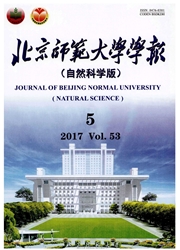

 中文摘要:
中文摘要:
以澳大利亚53个流域为例,通过统计分析的方法,对比不同流域面积、不同降水量等级流域的水文模拟精度,探讨了流域面积和多年平均降水量对HIMS模型和SIMHYD模型水文模拟效果的影响.研究结果表明:1)当流域面积在400-600km^2之间且多年平均降水量在8001200mm之间时,HIMS模型和SIMHYD模型模拟效果最好.2)当流域面积大于600km^2时,流域空间异质性增加;当流域面积小于400km^2时,降雨一径流非线性特征突出;HIMS模型和SIMHYD模型模拟精度降低.3)当流域多年平均降水量大于1200mm时,超渗产流机制不完全适用;当流域多年平均降水量小于800mm时,流域局部产汇流现象普遍、降雨一径流非线性特征突出;HIMS模型和SIMHYD模型模拟精度降低.
 英文摘要:
英文摘要:
Impact of catchment area and mean annual rainfall on simulation accuracy of two hydrological models was estimated by comparative statistical analysis. Two hydrological models, HIMS and SIMHYD, were adopted taking as basic data measured at 53 catchments in Australia. It was found that simulation accuracies of HIMS model and SIMHYD model were best in those catchments with area of 400-600 km^2 and mean annual rainfall of 800-1 200 mm. In catchment areas greater than 600 km^2 the catchment heterogeneity would increase, and in catchment areas smaller than 400 km^2 the characteristics of nonlinear runoff yield and concentration would become significant. Therefore, simulation accuracies of the two models would become worse in those catchments. Simulation accuracies also decreased in catchments with mean annual rainfall greater than 1 200 mm or smaller than 800 mm. Because runoff generation theory of excess-infiltration is not applicable with mean annual rainfall greater than 1 200 mm, and the local runoff yield and concentration generally exist in those catchments with mean annual rainfall smaller than 800 mm.
 同期刊论文项目
同期刊论文项目
 同项目期刊论文
同项目期刊论文
 Dramatic decrease in streamflow from the headwater source in the central route of China's water dive
Dramatic decrease in streamflow from the headwater source in the central route of China's water dive Change in global radiation and its impacts on the water cycle in the Yangtze River basin from 1961 t
Change in global radiation and its impacts on the water cycle in the Yangtze River basin from 1961 t An Impact Assessment Method of Dam/Sluice on Instream Ecosystem and its Application to the Bengbu Sl
An Impact Assessment Method of Dam/Sluice on Instream Ecosystem and its Application to the Bengbu Sl Spatial and temporal change in the potential evapotranspiration sensitivity to meteorological factor
Spatial and temporal change in the potential evapotranspiration sensitivity to meteorological factor Responses of River Runoff to Climate Change Based on Nonlinear Mixed Regression Model in Chaohe Rive
Responses of River Runoff to Climate Change Based on Nonlinear Mixed Regression Model in Chaohe Rive Spatial and temporal variability of daily temperature during 1961-2010 in the Yangtze River Basin, C
Spatial and temporal variability of daily temperature during 1961-2010 in the Yangtze River Basin, C Wavelet entropy-based investigation into the daily precipitation variability in the Yangtze River De
Wavelet entropy-based investigation into the daily precipitation variability in the Yangtze River De Temporal-Spatial Climate Variability in the Headwater Drainage Basins of the Yangtze River and Yello
Temporal-Spatial Climate Variability in the Headwater Drainage Basins of the Yangtze River and Yello 期刊信息
期刊信息
